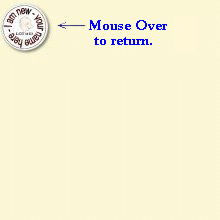 |
Records,
Labels, and History |
 |

|
Unless a piece happens to be very well documented, it's extremely difficult to claim a provenance which would be accepted by either the major auction houses or reputable dealers. I suspect that a fair percentage of the fine porcelain in many museums and private collections is not authentic. Without the documentation to support provenance claims, the only way to authenticate would be TL testing, and many items are too small and fragile for this destructive method of dating. This is of course to the advantage of the museums, the auction houses, dealers, and of course to the owners. Those small round authentic looking stickers such as are seen on the back of Sotheby's and Christies pieces, sometimes showing the Lot Number, are backed up with documentation and receipts from previous sales and/or ownership. Those
custom stickers are available to anyone. Some dealers I am sure have
them made to give their wares that authentic look. There's nothing
wrong with that. Just don't confuse the little round stickers with
provenance, unless of course the name happens to be
Eskenazi, Chait, David, Palmer, etc. Provenance Provenance \Prov"e*nance\, Anyone declaring themselves as sole provenance in providing only their own little round sticker, are in fact saying "This is new." which, in their case, is quite possibly true. Provenance should go back many, many years. True provenance should include generations of owners, documentation on loans to museums, published articles of exhibits, and, if possible, archeological records if unearthed from an excavation site. It should not mean a quick trip to Kinko's to have some stickers made. I've been asked at times what the value is of certain pieces in my collection. I am a true collector, authenticity is my main concern. I collect for beauty, I don't sell. I can sit and hold an old Ming bowl for hours, running my fingers over the surface feeling the flaws and cracks of age. There is a certain feel to an authentic piece which includes a warmth to the touch from handling. It's like the piece is actually responding. As to the provenance of the pieces in my collection, luckily I started collecting about thirty years before the advent of the Internet. Several of my pieces are from the collection of the late John Alexander Pope (Smithsonian), also from the Freer Gallery art collection. Several pieces made their way to me directly from excavation sites. Several resulting from the Three Gorges Dam project in China. Some are from years of exploring small out of the way shops. Some are directly from shipwreck sites, and some from e`Bay. Speaking of the Three Gorges Dam project, it's no wonder that there has been an increase of authentic artifacts available to the world market over the past several years. A total of 13 cities, 140 towns, and more than 1,600 villages were submerged. Nearly 1.5 million people were displaced. The tremendous amount of excavations along the Yangtze River for this mammoth project unearthed many sites with artifacts. An unprecedented rash of looting took place which overwhelmed government officials who were trying to prevent it from happening. It was a race against time for both the officials and the looters. Though I am against looting, in this case I am thankful that at least some artifacts were saved versus being destroyed and lost forever. If you've taken the eye-opening tour down the side streets of Jingdezhen that I offer on my main page, you have to question how many of the perfect pieces in the major art catalogues and galleries are authentic. Though the production of fakes has been going on for centuries, it exploded in the late 20th century for obvious reasons of profit and is now totally out of control. The simple economics of supply and demand. As time goes by, I feel more and more comfortable with the path I took over 40 years ago. That path was the decision to collect beautiful pieces of Chinese porcelain with unquestionable signs of authenticity such as cracks and visible wear. A trait that excluded both them and me from the high dollar market, yet made them affordable. I encourage the reader to do the same. With the exception of just a few pieces in my collection, there is absolutely no question whatsoever to the authenticity, at least to me. The day will come when the market has become so saturated with fakes that attention and demand will begin to rightfully focus on pieces that exhibit true signs of authenticity. Research that little sticker before you buy........ JP |

 pROVENANCE is a very interesting topic. I
thought it might be a good idea to cover it at some length. Be
it for insurance purposes, selling, purchasing, or trading, it is
an important factor.
pROVENANCE is a very interesting topic. I
thought it might be a good idea to cover it at some length. Be
it for insurance purposes, selling, purchasing, or trading, it is
an important factor. 